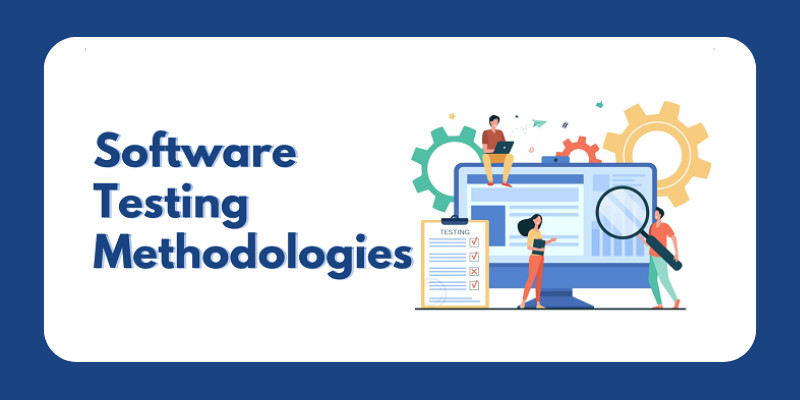How Do Software Testing Methodologies Differ?
Software testing is essential to the software development lifecycle (SDLC), ensuring that applications meet quality standards, function as expected, and are defects-free. Various software testing methodologies address different needs, objectives, and development approaches. These methodologies vary based on testing levels, automation, objectives, and application complexity. Understanding these methodologies helps organizations select the right testing strategy to enhance software quality and reliability. Enrolling Software Testing Course in Chennai can provide in-depth knowledge of these methodologies and equip professionals with the skills to implement effective testing strategies.
Manual Testing vs. Automated Testing
Manual Testing
Manual testing involves human testers executing test cases without using automation tools. This method is crucial for exploratory testing, usability testing, and scenarios where human intuition is necessary. While manual testing provides flexibility, it is time-consuming and prone to human errors.
Advantages:
- Suitable for exploratory and usability testing.
- No need for complex automation setup.
- Ideal for small projects and ad-hoc testing.
Disadvantages:
- Time-intensive and costly.
- Higher chances of human errors.
- Limited scalability.
Automated Testing
Automated testing utilizes specialized tools and scripts to perform tests, making it more efficient and repeatable. This methodology is ideal for regression testing, load testing, and scenarios requiring repeated execution of test cases.
Advantages:
- Faster execution and higher accuracy.
- Reusable test scripts for repetitive testing.
- Better scalability and efficiency.
Disadvantages:
- Higher initial investment in tools and scripting.
- Not suitable for exploratory and usability testing.
- Requires skilled testers for automation script development.
White-Box Testing vs. Black-Box Testing
White-Box Testing
White-box testing, or structural testing, examines the internal logic and design of the software. Testers need programming knowledge to inspect source code, logic flows, and data handling.
Advantages:
- Helps identify security vulnerabilities.
- Ensures code optimization and efficiency.
- Improves internal software structure.
Disadvantages:
- Requires access to source code.
- Demands extensive programming knowledge.
- Time-consuming for complex applications.
Black-Box Testing
Black-box testing assesses software functionality without examining its internal code structure. It focuses on inputs, outputs, and user interactions.
Advantages:
- No need for programming knowledge.
- Mimics end-user experience.
- Effective for functional and usability testing.
Disadvantages:
- Limited coverage of internal logic.
- Difficult to pinpoint root causes of defects.
- Requires extensive test case design.
Functional Testing vs. Non-Functional Testing
Functional Testing
Functional testing confirms that the software operates as intended based on defined requirements. It encompasses unit testing, integration testing, system testing, and acceptance testing.
Common Types:
- Unit Testing: Tests individual components.
- Integration Testing: Verifies interactions between integrated modules.
- System Testing: Evaluates the complete system’s functionality.
- User Acceptance Testing (UAT): Ensures software meets user expectations.
Non-Functional Testing
Non-functional testing assesses software attributes such as performance, security, and usability. It ensures the application meets business requirements beyond functionality.
Common Types:
- Performance Testing: Examines speed, responsiveness, and stability.
- Security Testing: Identifies vulnerabilities and security risks.
- Usability Testing: Evaluates user-friendliness and accessibility.
- Compatibility Testing: Ensures software works across different environments.
Agile Testing vs. Traditional Testing
Traditional Testing (Waterfall Model)
Traditional testing follows a sequential approach, where testing occurs after the development phase. It is structured and well-documented but lacks flexibility.
Advantages:
- Clear documentation and well-defined processes.
- Suitable for projects with stable requirements.
- Easier tracking of defects and changes.
Disadvantages:
- Late-stage defect detection increases costs.
- Rigid and not adaptable to changes.
- Time-consuming for dynamic projects.
Agile Testing
Agile testing is an iterative and continuous process integrated with Agile development methodologies. Testing occurs in parallel with development, ensuring rapid feedback and adaptability.
Advantages:
- Early defect detection and resolution.
- Encourages collaboration between testers and developers.
- More adaptable to changing requirements.
Disadvantages:
- Requires skilled testers with Agile expertise.
- Less documentation, which can lead to challenges in tracking changes.
- Continuous testing demands more resources and coordination.
Different software testing methodologies cater to project requirements, development models, and business goals. While manual testing is suitable for exploratory testing, automated testing enhances efficiency. White-box testing focuses on internal code quality, whereas black-box testing evaluates functionality. Functional testing ensures requirement fulfillment, while non-functional testing guarantees performance, security, and usability. Agile testing is ideal for dynamic development, while traditional testing suits structured projects. Enrolling in a Selenium Training in Chennai can help professionals gain expertise in these methodologies and apply them effectively in real-world projects.
Choosing the proper testing methodology depends on project complexity, timeline, and quality expectations. A balanced approach, often combining multiple methodologies, helps organizations deliver high-quality software that meets user demands and industry standards.



Leave a Reply
Want to join the discussion?Feel free to contribute!